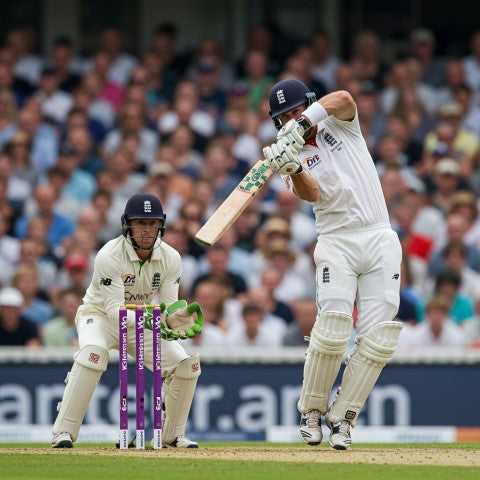What’s the Science of Pace Bowling in the IPL?

The Indian Premier League (IPL) has become a global cricketing phenomenon, renowned for its electrifying atmosphere, dazzling sixes, and high-stakes drama.
While batters often steal the spotlight with their flamboyant strokeplay, pace bowling remains a critical counterbalance—offering strategic breakthroughs, psychological intimidation, and a thrilling contest between bat and ball.
In a format tailored for explosive batting, the role of fast bowlers might seem secondary. However, the science of pace bowling reveals a different narrative—one where biomechanics, physics, data analytics, and tactical variation converge to make every delivery a calculated act of skill.
This article explores the science behind pace bowling in the IPL, uncovering how bowlers adapt, innovate, and excel in India's unique cricketing conditions.
1. The Basics of Pace Bowling
Pace bowling, in its simplest form, is the art of delivering the ball at high speeds—typically ranging from 130 to 150+ km/h—with the aim of outwitting or overwhelming the batter. But speed alone doesn't define a pacer. True effectiveness lies in combining velocity, accuracy, and variation.
Pace bowlers fall into different categories:
-
Fast (145+ km/h): Bowlers like Lockie Ferguson and Umran Malik who rely on raw pace.
-
Fast-medium (135–145 km/h): Bowlers like Jasprit Bumrah and Mohammed Shami who blend speed with control.
-
Medium pace (120–135 km/h): Often more reliant on swing and seam than brute speed.
In T20 cricket, where margins are razor-thin, pace bowlers are expected to do more than just bowl fast. They must read the game, vary their deliveries, and execute their plans under immense pressure—all within their four-over quota.
2. Understanding Indian Pitch Conditions
Unlike the traditionally green and bouncy surfaces found in Australia or England, Indian pitches are generally dry, abrasive, and slower—particularly as matches progress. These conditions tend to favour spin bowlers, making it more challenging for fast bowlers to rely solely on pace and bounce.
Fast bowlers adapt by:
-
Using the new ball during powerplays to exploit any swing or movement.
-
Bowling hard lengths and using the short ball judiciously on surfaces that grip.
-
Deploying cutters and slower balls that grip the dry surface, particularly effective at the death.
Additionally, dew plays a significant role in evening games, especially in cities like Mumbai and Chennai. Dew reduces grip and diminishes spin, making seam-up bowling and yorkers more effective.
Weather, humidity, and pitch wear across a high-frequency IPL schedule further influence how pace bowlers approach each match, requiring them to assess conditions quickly and adjust accordingly.
3. Physics Behind the Ball: Swing, Seam, and Bounce
Pace bowling is deeply rooted in physics, manipulating air resistance, surface friction, and angular momentum.
-
Swing Bowling:
-
Conventional swing occurs when one side of the ball is shiny and the other rough. The asymmetry in airflow causes the ball to move laterally in the air.
-
Reverse swing, typically later in the innings, moves the ball in the opposite direction to conventional swing despite using the same grip, due to turbulence created by the scuffed surface.
-
-
Seam Movement: A seam angled at the right direction upon release can catch imperfections in the pitch, causing lateral deviation. Bowlers like Shami are masters of seam presentation, achieving movement even on placid tracks.
-
Bounce: Influenced by release angle, pitch hardness, and speed, bounce can be a potent weapon. Short-pitched deliveries, especially from taller bowlers, can surprise batters—even on low-bounce Indian wickets—if executed well.
4. The Biomechanics of a Fast Bowler
The act of bowling fast is a highly choreographed sequence involving the kinetic chain—a transfer of energy from the ground through the body to the ball.
-
Run-up and Load-up: Generates momentum, requiring balance and rhythm.
-
Shoulder Rotation and Arm Speed: The core and shoulder contribute significantly to release velocity. Improper rotation can lead to energy loss or injury.
-
Wrist Position and Grip: Determines seam orientation and point of release, affecting swing and accuracy.
Key physical traits include:
-
Core strength to stabilise the body during delivery.
-
Flexibility in the hips and shoulders to prevent overstrain.
-
Explosive power in the legs to drive momentum.
Understanding biomechanics not only improves performance but also reduces the risk of injuries like stress fractures, hamstring pulls, and shoulder impingements, which are common among fast bowlers in a congested tournament like the IPL.
5. Variations Used in the IPL
Pace bowling in the IPL is synonymous with variation. With batters anticipating every move, unpredictability becomes a fast bowler’s greatest ally.
Key variations include:
-
Yorkers: Targeting the base of the stumps; ideal at the death.
-
Bouncers: Surprise weapons, particularly effective against set batters.
-
Slower balls: Off-cutters, leg-cutters, and back-of-the-hand deliveries disrupt timing.
-
Knuckleballs: Deceptively floaty, used to trick aggressive batters.
-
Cutters: Exploit dry pitches; grip and turn off the seam.
Timing of these deliveries is crucial. Bowlers tend to:
-
Use hard lengths and variations in the powerplay to disrupt aggressive openers.
-
Switch to slower balls, yorkers, and wide lines in the death overs to restrict runs.
These are not just skills but calculated deployments of science and psychology—deceiving the batter through pace, length, and disguise.
6. Data, Analytics & Fast Bowling Strategy
The IPL is a data-rich environment. Teams employ performance analysts and use tools like Hawk-Eye to monitor bowling patterns, success zones, and batter weaknesses.
Applications include:
-
Ball tracking to assess seam position, line, and length success.
-
Matchup analysis to decide whether a right-arm quick should bowl to a left-hander or spinner.
-
Real-time feedback through in-game tablets and radio communication.
This data-driven approach allows fast bowlers to adjust field settings, plan over-by-over strategies, and exploit opposition weaknesses, converting raw pace into match-winning impact.
Key Components of IPL Pace Bowling Science
| Scientific Element | Application in IPL Pace Bowling |
|---|---|
| Physics of Swing | Lateral ball movement through air resistance (conventional/reverse swing) |
| Seam and Bounce Mechanics | Pitch interaction, seam angle control, bounce manipulation through release angle |
| Biomechanics | Optimised energy transfer, reducing injury via proper posture, wrist position, and core strength |
| Variation Techniques | Use of slower balls, yorkers, knuckleballs to create deception |
| Pitch & Weather Conditions | Adjusting length and speed based on dryness, dew, pitch hardness |
| Data Analytics | Ball tracking, batter matchups, field placement optimisation |
| Fitness Science | Specialised routines for strength, recovery, and workload management |
7. Case Study: Jasprit Bumrah and Other IPL Pace Icons
Jasprit Bumrah, the face of Indian pace in the IPL, exemplifies modern bowling science:
-
Short, explosive run-up: Reduces strain while enabling rapid arm speed.
-
Slingy action: Generates unique angles and late movement.
-
Deadly accuracy: His ability to nail yorkers consistently stems from meticulous biomechanics and practice.
Other pace icons include:
-
Lockie Ferguson: Among the fastest in the league, using brute speed to unsettle batters.
-
Kagiso Rabada: Blends aggression with thoughtful variation, often attacking with short deliveries.
-
Mohammed Shami: Relies on seam position and upright wrist to generate movement on flat tracks.
What unites them is the scientific application of their natural abilities—refined through training, technology, and experience.
8. Training, Fitness and Recovery
Given the IPL’s dense schedule, pace bowlers undergo specialised training to stay fit and effective:
-
Strength Training: Focus on lower body and core to enhance power and stability.
-
Flexibility and Mobility Work: Prevents stiffness, especially in shoulders and hamstrings.
-
Recovery Protocols: Use of cryotherapy, massage, hydration, and sleep tracking to manage fatigue.
Teams also monitor workload metrics to avoid overuse injuries, especially for bowlers playing in back-to-back fixtures.
9. How Young Pacers Are Learning the Science
With the IPL investing in academies and development squads, young pacers are now nurtured with sports science from the grassroots level:
-
Video analysis tools help bowlers break down their own actions.
-
Strength and conditioning coaches guide tailored fitness routines.
-
Mentorship programmes pair youngsters with legends like Dale Steyn or Lasith Malinga.
Franchises such as Mumbai Indians and Rajasthan Royals are particularly active in developing young pace talent through these means.
Conclusion: Unraveling the Secrets to IPL Pace Bowling Success
Pace bowling in the IPL is a blend of art and science, requiring bowlers to marry athleticism with analytical thinking. In a format engineered to favour batters, the best fast bowlers adapt their skills using physics, biomechanics, and technology to stay one step ahead.
The evolution of T20 cricket has not diminished the value of pace—it has simply raised the bar, demanding smarter strategies, deeper knowledge, and unrelenting discipline. As the science of the game continues to evolve, so too will the craft of pace bowling, ensuring that the thrill of a well-bowled yorker or a perfectly disguised slower ball remains central to the IPL’s enduring magic.





Leave a comment